Bernal Heights & Bayview – The Importance of Days On Market (DOM)
January 29, 2020

January 29, 2020

Days on market (DOM) measures the total number of days a listing remains active before the seller accepts an offer. Typically, a low DOM signals a strong market favoring sellers, and a high DOM indicates a weak market that favors buyers, although average DOM varies by market. For example, homes generally sell faster in West Coast markets than in Midwest markets.
In California, the median DOM for single-family homes at the end of 2019 was 25 days. That’s down three days from the end of 2018, which indicates the market is moving faster than it was a year ago. Below is the average DOM data for December. Average days on market in San Francisco was 31 days, down from 37 days in December 2018.
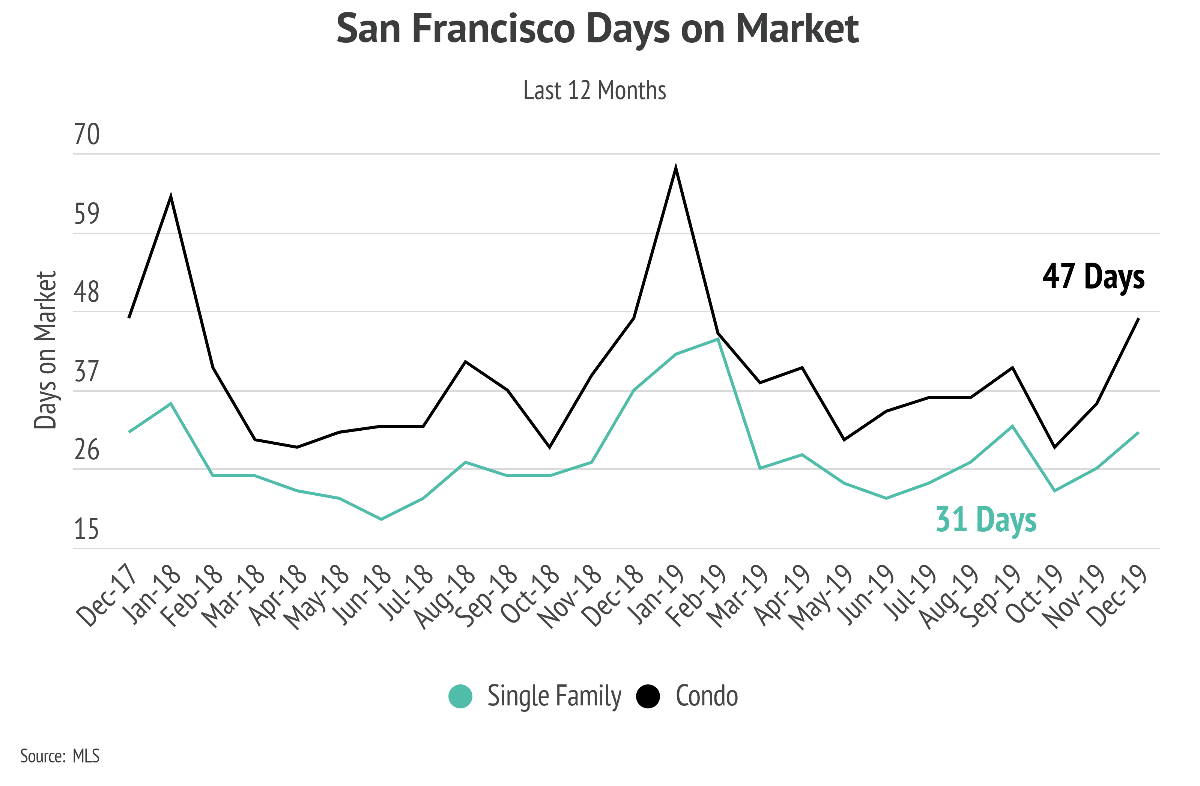
San Francisco has a very low DOM. It’s so low, in fact, that buyers must make offers exceptionally quickly and may even need to offer concessions, such as waiving contingencies, to get listings under contract.
Let’s drill down on two local San Francisco markets and examine Days On Market for Bernal Heights and the Bayview and what this means for the San Francisco home buyer and home seller.
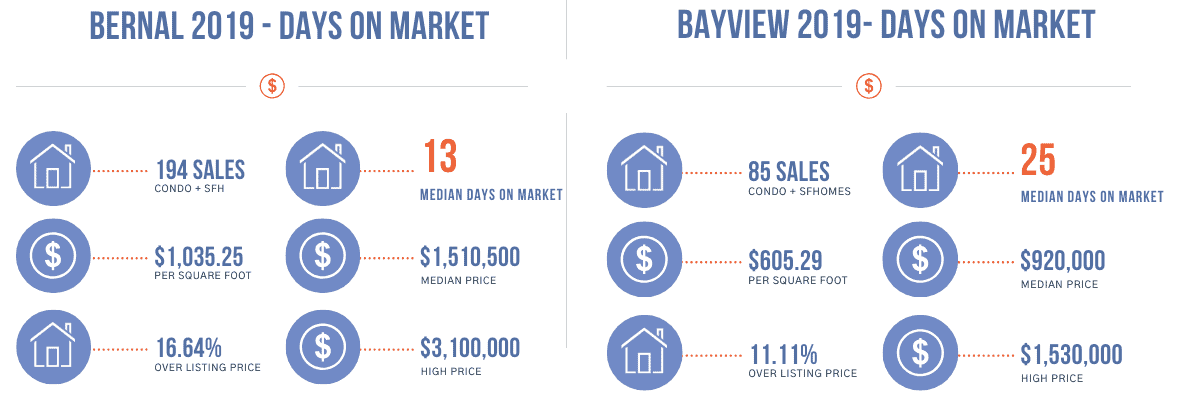
In 2019, Bernal Heights single-family homes and condos sold in 13 days (median). In fact, this rate was matched in the month of December, a month typically known as slower for real estate transactions.
It’s worth noting that the vast majority (79.9% of the 194 single-family and condos) sold within 30 days and earned themselves 18.49% over the listing price. Those that spent more time on the market resulted in a lower sales price to list price ratio. Overall for 2019, Bernal Heights homes sold on average 16.64% over listing price.
85 single-family homes and condos sold in the Bayview last year with a median of 25 days on market (DOM). Bayview homes sold 6 days faster than San Francisco as a whole.
49 Bayview listings (57.65% of all Bayview homes) sold within 30 days. On average, homes sold 11.11% over listing price.
DOM is important because buyers and their agents use it as a general measure of which homes are new to the market or “fresh.” Homes typically generate the most interest in the first few weeks on market (or, in fast-moving markets, during the first few days). Fresh listings are perceived as having a lot of potential value since they’ve only been seen by a handful of buyers.
Once a home has above-average DOM, it is considered stale—a negative perception that only gets worse as homes spend longer than 30, 60, and 90 days on the market. In this scenario, buyers generally assume:
Sellers can rely on various strategies to ensure their property doesn’t become stale. One of the most important is pricing the home at fair market value from the outset. Sellers can determine this important number by hiring an experienced and knowledgeable agent; conducting a Comparative Market Analysis (CMA); and knowing the local area’s median home prices, sale-to-list averages, and supply. (You’ll find much of this data in our monthly newsletter.) Another important strategy? Consult with a qualified agent about making any repairs or renovations that may be preventing the home from selling.
Price adjustments, which are common, are an opportunity for buyers to track the property history of stale listings. For example, consider a home that’s been on the market for 94 days, as represented in the chart below. At first glance, the listing looks stale and not worth considering.
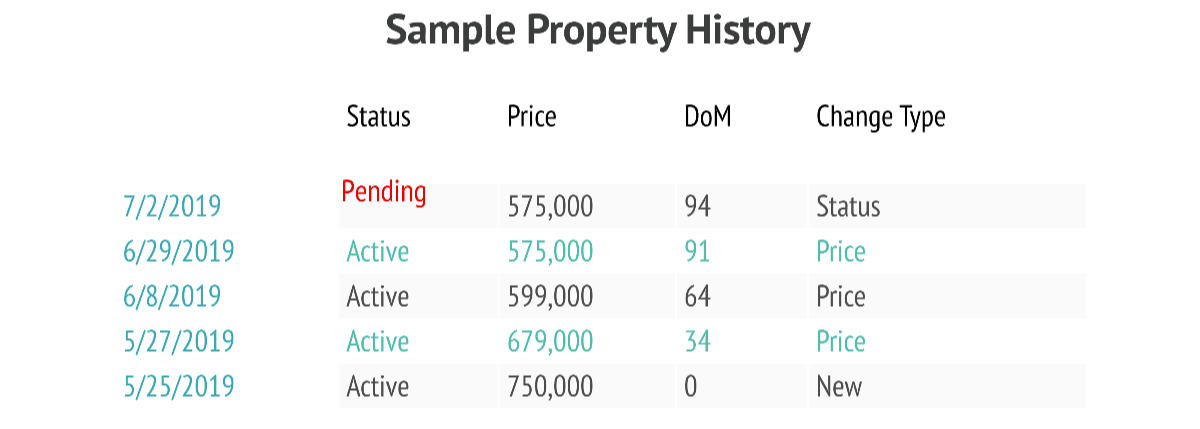
However, by examining the property history, a buyer or their agent will notice that the property has only been on the market at its new price of $575,000 for three days. This is an opportunity for a buyer to see the property and evaluate it early at the reduced price.
Local Market Price-Reduction Analysis
The chart below shows how common price reductions were in San Francisco over the last two years.
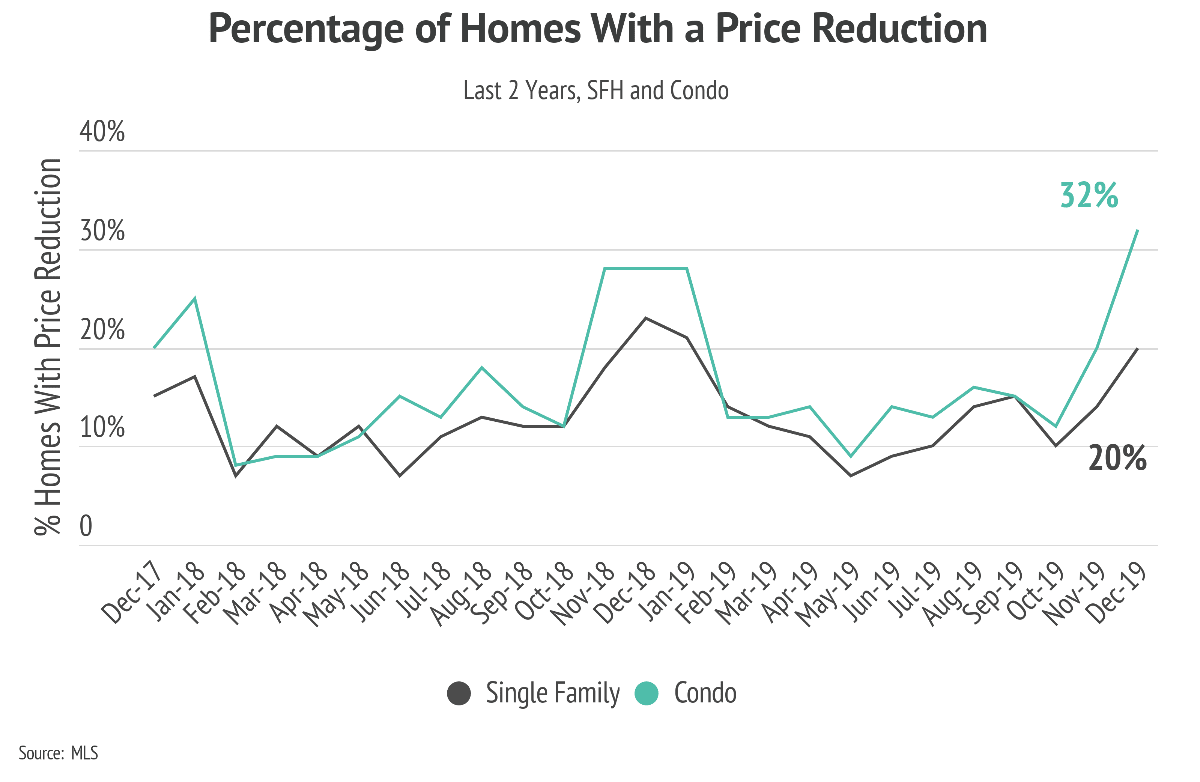
After several price reductions, a listing can become so stale that it makes sense to withdraw it from the MLS and relist it after a certain period of time has passed. In California, sellers must wait 90 days from the time a listing is withdrawn to list it again—a hard choice for sellers who need to sell their homes quickly. However, this strategy is often successful because it’s common for a home to sell within five days of coming to market as a “new” listing.
Remember that DOM measures the total number of days a listing is active before an offer is accepted. Once that happens, the escrow process begins. The home is in escrow while financing is secured, inspections are conducted, the title is obtained, and so on. Escrow ends when the buyer gets the keys to the house after the close of sale.
Accepting an offer and moving to escrow pauses the DOM count and changes the home’s status from “active” to “pending” (as illustrated in the Sample Property History chart above). For example, if a home listed on January 1st goes into escrow on January 15th but falls out of escrow 60 days later on March 15th, the property will come back on the market with a DOM count of 15 days (i.e. only the days it was on the market prior to escrow). The status also changes back to “active,” meaning the house is no longer under contract.
Average DOM fluctuates based on the time of year. To see an example of this, let’s look at the DOM data from the last 24 months.
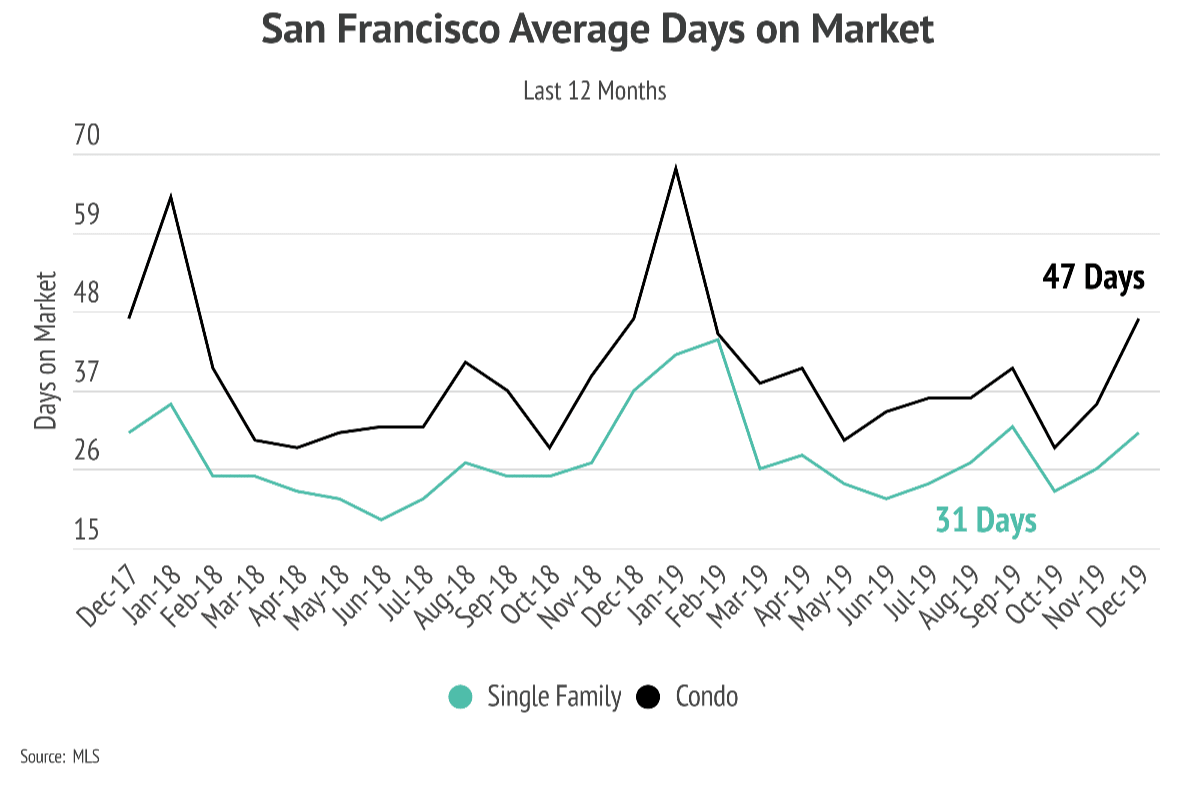 In the winter months, DOM is significantly higher because the seasonal nature of the real estate market favors the summer months. The DOM rate is higher in the winter because buyers and sellers prefer to move during warmer weather, they often time a move to coincide with the end of the school year, and they opt not to move during the holidays. With less competition, the slow winter season gives buyers the chance to find a good deal on homes that have been on the market for longer than average. With this in mind, potential sellers should be cautious about when they list their homes as there is also a smaller pool of buyers in the winter months.
In the winter months, DOM is significantly higher because the seasonal nature of the real estate market favors the summer months. The DOM rate is higher in the winter because buyers and sellers prefer to move during warmer weather, they often time a move to coincide with the end of the school year, and they opt not to move during the holidays. With less competition, the slow winter season gives buyers the chance to find a good deal on homes that have been on the market for longer than average. With this in mind, potential sellers should be cautious about when they list their homes as there is also a smaller pool of buyers in the winter months.
Average DOM differs depending on price segment. There are several reasons why luxury homes generally have a higher DOM than more affordable, entry-level homes. First, there are fewer buyers with the income necessary to afford luxury homes. Second, luxury homes are often harder to compare and take longer to evaluate in terms of their market value. Third, buyers looking for investment properties to purchase and then rent out are more active in the entry-level home segment than in the luxury market.
Let’s look at the DOM data from December 2019 based on price segment.
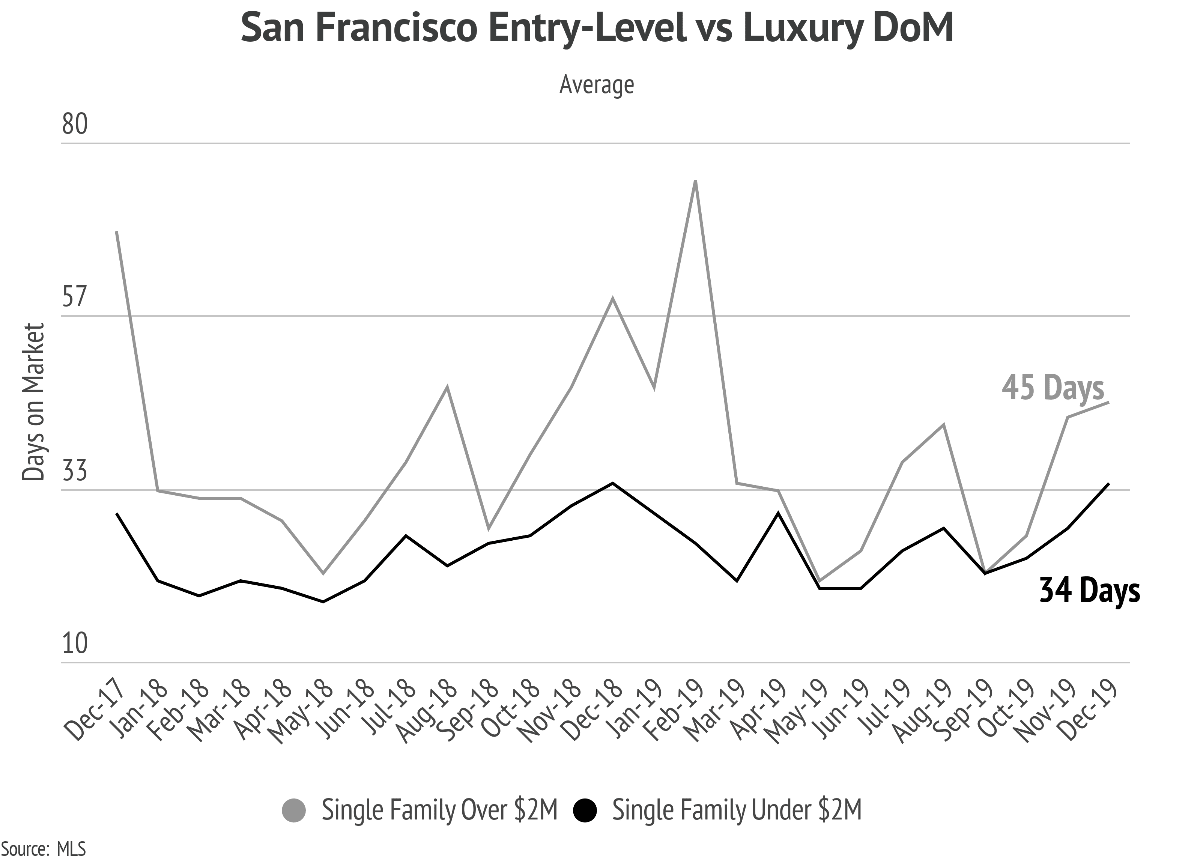
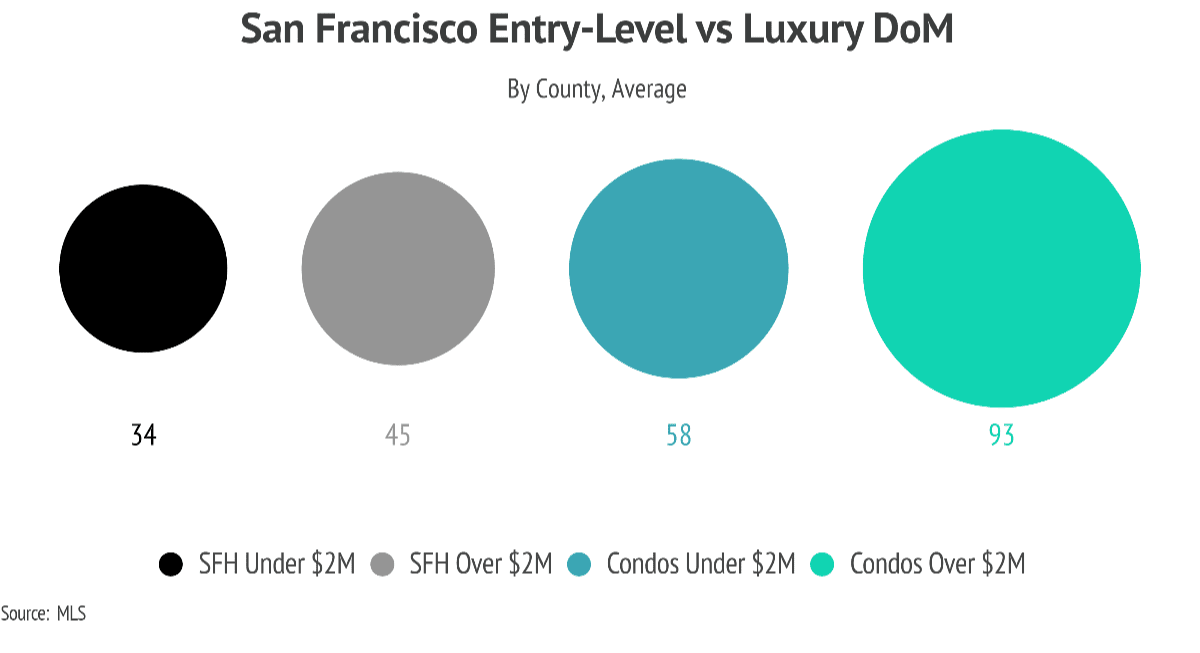
Luxury single-family homes priced over $2 million took more than 25% longer to sell than homes in the more stable price segment of under $2 million. Luxury condos took almost twice as long to sell.
Because most agents specialize in different price segments and the process is different for each category, it’s important to work with an agent who has experience buying or selling in your price range.
Average DOM also differs depending on the number of price reductions a home has undergone. This may seem obvious since homes that sell quickly don’t need price reductions. However, the data below is worth noting because it shows just how significantly DOM is impacted when a home is priced too high.
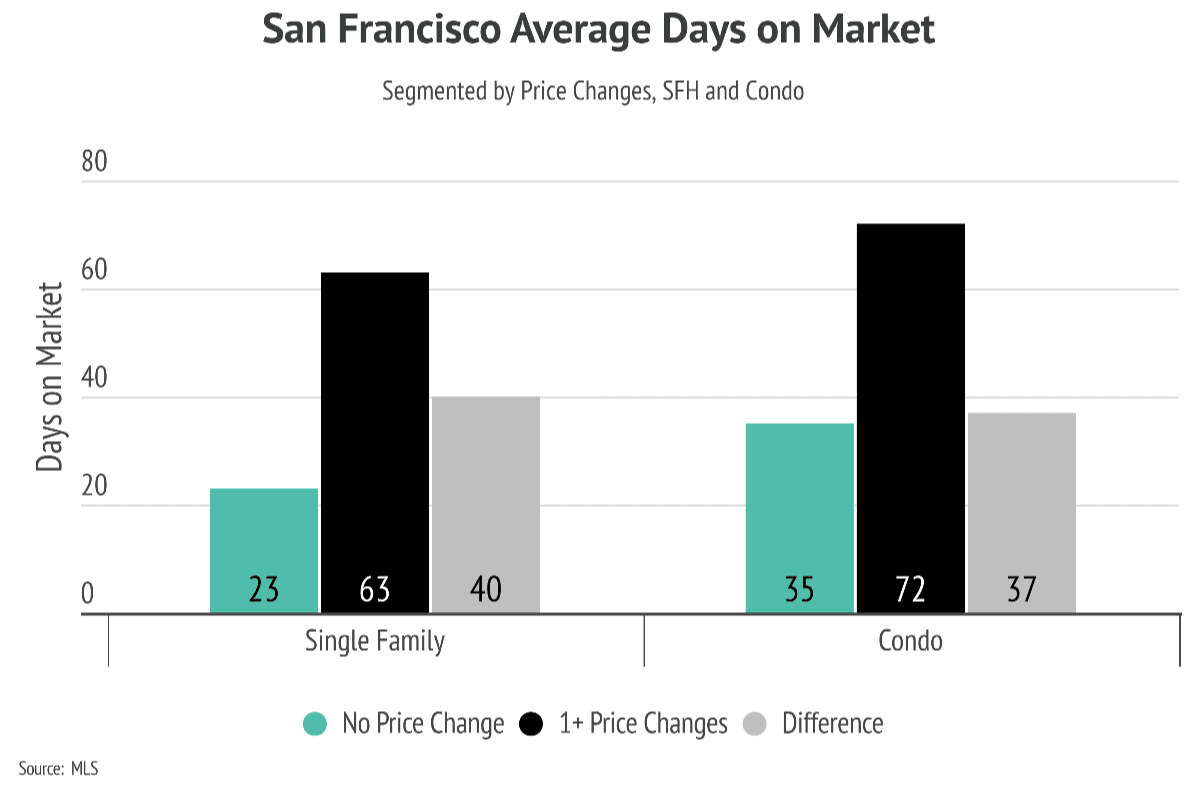
Homes with price reductions spent almost three times as long on the market for single-family homes and over twice as long for condos. This is compelling proof of the importance of pricing a home to sell the first time it’s listed.
Stay up to date on the latest real estate trends.

December 19, 2025
Escape the San Francisco Winter Chill

December 5, 2025
How Savvy Buyers Can Find Opportunity

December 4, 2025
In November 2025, 14 single-family homes sold in Bernal Heights.

December 1, 2025
In November, there were 19 single family and condo home sales in Pacifica. Closed listings range in price from $520K to $1.65M.
You’ve got questions and we can’t wait to answer them.